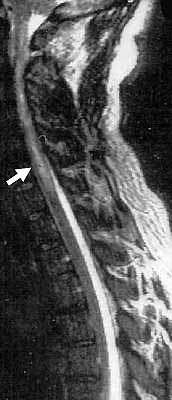Home, Search, Index, Links, Pathology, Molecules, Syndromes,
Muscle, NMJ, Nerve, Spinal, Ataxia, Antibody & Biopsy, Patient Info
|
Home, Search, Index, Links, Pathology, Molecules, Syndromes, Muscle, NMJ, Nerve, Spinal, Ataxia, Antibody & Biopsy, Patient Info |

|
|
Heroin myelopathy Increased T2 signal (Arrow) in cervical spinal cord |
|
Myelopathy Neuropathy Rhabdomyolysis |